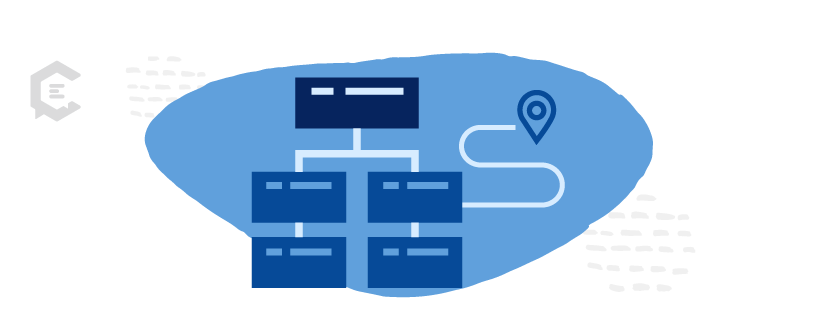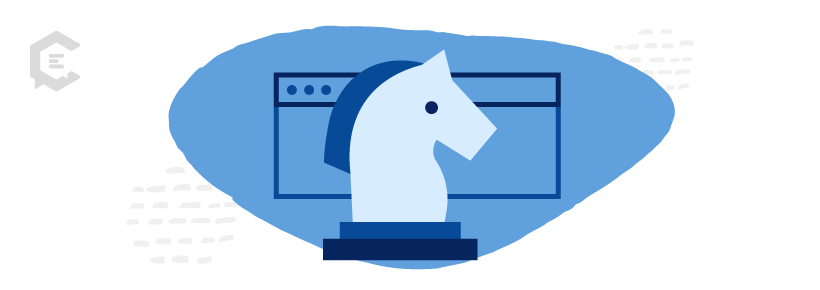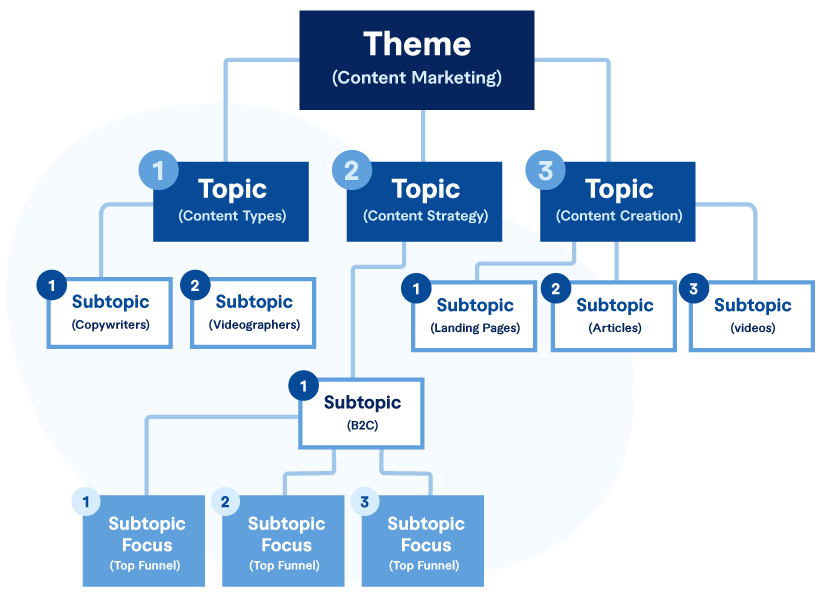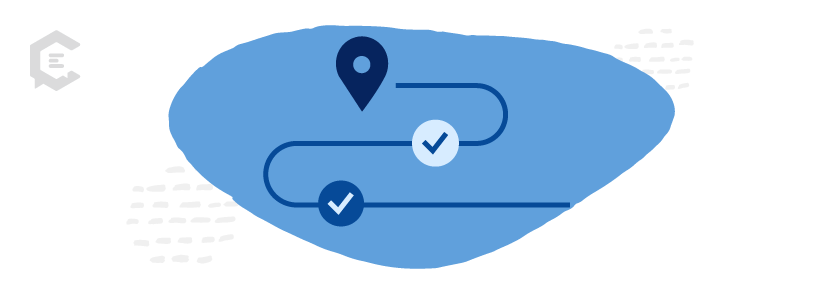How focused is your content marketing? Would you like to put in less effort and investment and see more results? A content roadmap can help you do exactly that.
A roadmap ensures your content is well-planned and carefully targeted to offer a clear path to your content marketing objectives. Following that path will help you hit your goals without wasting time, energy, and money creating low-payoff content.
First, however, you’ll have to put in the work of building the content roadmap. It takes some effort upfront but pays huge dividends over time. You’ll need to understand your audience, current content, and business goals. You’ll also have to do some keyword research and competitor analysis. Then you’ll put it all together in a format that makes sense for your team. When you’re finished, you’ll have a clear direction for your content and a path to achieve your goals.
This guide will walk you through each step of the process so that you can build an effective content roadmap for your business.
What is a content roadmap?
A traditional road map tells you exactly how to get from where you are to where you’re going. That’s what a content marketing roadmap does, too.
You begin by figuring out where you stand. You’ll assess your current content to see what’s working, what needs to be tweaked, and where your efforts are not paying off at all. Also, you’ll review your competitors’ content to see what they’re doing and how your content can fit into the current landscape.
Then you’ll build a clear content strategy and a plan for implementing it. Your content roadmap will include ideas for updating and enhancing your existing content, as well as everything you need to create loads of results-oriented new content for your site.
Content strategy: The basics
Before we start developing your roadmap, let’s break down some key components of content marketing and review some industry terms. You’ll need a thorough understanding of these concepts to create your roadmap.
Content marketing strategy
A content marketing strategy is a plan to create and publish written, video, or graphic content to achieve specific business objectives. The most common content marketing strategy involves adding blog posts to your website to increase organic traffic.
A good content marketing strategy contains several distinct elements:
- A mission statement that defines your goals for the content you create
- An understanding of who your target audience is and what they want to see from you
- Competitor analysis to figure out what others in your industry are doing well (and not so well)
- A solid plan for creating, curating, and publishing content
- Measuring and analyzing your results so that you can fine-tune your strategy over time
If you’re just getting started with content marketing, start by reading our beginner’s guide to content marketing. It will give you a good overview of the basics.
Target audience
Your target audience is the group of people you want to reach with your content — your best potential customers. To determine your target audience, consider factors such as their age, gender, location, interests, and personality traits.
You can also visualize your target audience as individuals or “personas.” Each persona should have its own specific goals and challenges. This helps you create highly specific content that speaks directly to individuals.
Keyword research
Keyword research means discovering keywords your target audience is likely to be typing into a search engine.
Your goal is to find keywords that have:
- Lots of search traffic
- Low competition
- High relevance to your business
- Broad appeal to your target market
Long-tail keywords
Long-tail keywords are keyword phrases that are more specific than more common keywords. They’re usually four to six words long, although that can vary. Long-tail keywords tend to have lower search volume but higher conversion rates because they’re more specific to what people are looking for.
For example, it’s tough to get onto the first page of search results for a word like “furniture” or even a short phrase like “dining room furniture.” But if you build that word out into a long-tail keyword like “affordable modern dining tables” or “extendable wooden dining tables,” you’ll find it much easier to rank.
Types of content
Most businesses focus their content efforts on a blog. Blog posts give you a chance to build your site over time into a library of information around your area of expertise. Email and social media are often used in conjunction with a blog.
Content can also be videos, infographics, podcasts, downloadable ebooks, and other communication tools.
Customer journey
The customer journey is the process your target audience goes through as they move from being unaware of their problem to becoming a satisfied customer of your product or service.
There are three stages to the customer journey:
- Awareness: The potential customer becomes aware they have a problem.
- Consideration: The potential customer begins researching solutions to their problem.
- Decision: The potential customer decides which product or service to purchase.
Your content should be created to move your target audience through each customer journey stage.
Sales funnel
The sales funnel is a model that pulls the customer through the customer journey from awareness to purchase. For example, a business might build awareness with blog posts, then entice the reader to join an email list with a downloadable ebook. Next, the content of the emails will encourage them to consider a product, and finally, they’ll be offered a discount to close the sale.
SEO
Search engine optimization (SEO) is the practice of optimizing your content to rank higher in search engine results. Most people never look beyond the first page of search results, so ranking higher means your content is more likely to be seen by people searching for keywords related to your business.
SEO is usually achieved by weaving keywords through the content in particular ways, but other factors come into play, like the length of the content and how it’s interlinked between your site and external sites.
Building your content roadmap
Now that we’ve reviewed the basics of content marketing, let’s get into the details of building your content roadmap.
As you go through this process, keep in mind that your content roadmap is a living document. This means it will likely evolve over time as your business does. The important thing is to have a plan to refer back to as needed.
We follow a five-step process to create content roadmaps for our clients — here’s how you can too.
1. Conduct content research
Begin by examining your existing content. Make a list of all your current content, and then categorize it by topic. This will give you a snapshot of your starting point, and you may begin to see where there are gaps in your current catalog.
Next, analyze the strengths and weaknesses of your content. Note which pages generate the best results, and see if you can identify what you’re doing right in those cases. You’ll want to avoid cannibalizing this traffic — don’t replicate those keywords or topics in your new content. Instead, build on your success by branching into closely related areas and interlinking the new posts with high-performing content.
Also look closely at your underperforming content. In some cases, you’ll have well-written posts that aren’t attracting the traffic they deserve. Those pages could benefit from updating and optimization. Reworking them so they bring better results will be part of your content roadmap.
In other cases, you’ll find content that should be eliminated because it’s outdated, no longer relevant, or not strong enough to reflect your brand. Prune those posts, and perhaps recycle their themes or topics into fresh, well-written posts.
This process should leave you with a clear picture of your current content situation.
2. Create your keyword and topic portfolio
The next step is to create your keyword strategy. Your goal is to build a list of strong keywords relevant to your business and likely to attract organic traffic from your target market.
You’ll start by brainstorming a huge list of potential keywords, then narrow the collection down to the strongest candidates.
Some keywords will seem obvious to you. For instance, if you run a local grooming shop in Albuquerque, you’ll want to rank for long-tail keywords like “grooming in Albuquerque” and “best groomers in Albuquerque.”
But think about other topics that your target audience — dog owners in Albuquerque who spend money on their pets — might search for. For example, you might want to create content around phrases like “Dog shows in New Mexico,” “Dog-friendly parks in Albuquerque,” and “How to stop your dog from barking.”
To get started, brainstorm a list of relevant keywords, and then use a tool like Google AdWords Keyword Planner to research the monthly search volume for those terms. You’ll need a free Google Ads account to use the planner tool, but it’s worth the effort to create one.
You can also use this tool (or others like it) to generate lists of similar keywords that you may have missed. Google also offers a free Trends tool that can help you compare keywords to see which ones get more traffic.
Also, check to see which keywords your competitors have in the bag, and look for opportunities they’ve missed.
You’ll notice that some keywords are highly competitive, while others are much easier to rank for. Your goal is to strike a balance — build a list of words that have decent traffic volume but aren’t too competitive for you to get into the first page of results.
Toss out anything that isn’t closely related to your business or attractive to your target market — just because a keyword attracts a lot of traffic doesn’t mean it’ll move you toward your business goals.
3. Topic ideation and prioritization
With a list of solid keywords in hand, it’s time to start thinking about topics.
For each keyword, brainstorm several potential topics that could be used to create content around that keyword. For example, a plumber might target the keywords “replace water heater.” Some of the topics targeting that keyword might include “average price to replace water heater,” “how to extend the life of your water heater in St. Louis,” and “what to do if your water heater is leaking.”
For each topic area, generate a list of relevant subtopics. If you’re brainstorming with your team, a mind-mapping layout might help you organize and generate lots of ideas.
Another way to generate ideas is to type your keyword or main topic idea into Google and see what the most popular questions are. For instance, if you type “replace water heater” into Google, you’ll see a section right after the ads that says:
People also ask (PAA)
- Can you replace a water heater yourself?
- How often should a hot water heater be replaced?
- Is it better to fix or replace water heater?
- How much does it cost to replace a water heater burner?
Those are all great ideas for content topics.
Once you have an extensive list of topics, it’s time to think about which ones you should tackle first.
We use multiple data points to calculate topic effectiveness, including search traffic, intent, target audience, and competitor positioning. But if you’re working on your own, that approach might be overwhelming. In that case, focus on search volume, difficulty scores, and competitor positioning to prioritize your topics. Just make sure you don’t stray away from your company’s core competencies or the concerns of your target audience.
How many topics do you need? That depends on how much content you plan to produce and how often you want to generate new ideas. For example, if you’ll be publishing twice a week, you’ll need 104 topics to get you through the following year. It’s a good idea to prepare a few extra topics in case some of your ideas become irrelevant or prove too hard to research or write about.
4. Taxonomies
A taxonomy is a classification system for organizing content. It helps you group content together so that it can be easily found and used. A taxonomy starts with broad themes and then gets more specific.
You can visualize your taxonomy like an organizational chart, with a few primary content themes across the top of the chart. Each content theme will have multiple topics, and each of those topics will have multiple subtopics.
For example, a blog post about “How to make a cake” might be classified under the following taxonomies:
- Content theme: Recipes
- Topic: Baking
- Subtopic: Desserts
The top category, Recipes, would have several subcategories. The subcategory, Baking, might also have many subtopics. And each subtopic could contain many pieces of content.
Although you generated your topic ideas around keywords, that may not be the best way to organize your taxonomy architecture.
For example, if your business has multiple target audiences, you might want to organize your main content themes around the readership. We have separate content areas for our client businesses and our content creators on our blog, with subdivisions under each one. So, for example, both audiences might be interested in a post about keyword research, but we would create two separate posts for them.
Let’s say the plumber in our example targets homeowners, property managers, and landlords and has a content theme for each group. “How often should a hot water heater be replaced?” could be written into separate posts aimed at each audience and placed in all three content areas.
Another way to determine your main content themes is to look at the components of your business. What product lines or groups of services do you sell? If the plumber was organizing their content this way, their main content themes might be water heaters, kitchen remodels, and home repairs. In that case, “How often should a hot water heater be replaced” would go in the water heater area, along with related topics.
Another popular option is to organize your content around pillars. You create pillar content when you write a page that covers one of your primary topics comprehensively. These are usually long posts with internal links that branch off to subtopics. Each subtopic should also link back to the pillar. This structure helps Google and other search engines know which pages on your site are the primary sources of information for a reader, and they allow readers to use your posts and pages to learn about the topics they’re interested in.
5. Content briefs
The final piece of your content roadmap is the content briefs. These are summaries of each individual piece of content you plan to create, including the title, topic area, target audience, keywords, tone, and format. It’s also a good idea to include on-page optimization elements, related keywords, and the top consumer questions to answer. The brief is the primary tool you’ll use to communicate with your content creator and editor.
Content briefs help keep everyone on the same page about what’s being created and why. They also make it easier to track progress and ensure each piece of content is meeting its objectives.
To create a content brief, start by giving your piece a working title and summarize the main point in one or two sentences. Then, identify the target audience and primary keywords. It’s also helpful to include a suggested tone (formal, conversational, etc.) and format (blog post, infographic, video, etc.).
If you’re working with a team, you can use a tool like Google Docs or Trello to create and share your content briefs. A simple spreadsheet will do the trick if you’re working on your own.
Create content briefs for existing content you’d like to optimize and each piece of new content you want to be created. Then, share the brief with your writer, along with clear instructions for how you want the work submitted (Google Docs is a popular option) and the deadline.
The simplest way to create content briefs is to start with a template.
For example, your template could look like this:
- Suggested headline:
- Word count:
- Keywords:
- Related keywords:
- Target audience:
- Tone:
- Description/Suggested outline:
- Suggested resources:
- Internal links/landing pages to include:
You could save your template as a card in Trello or a Google doc. Then fill in the blanks for each piece of content.
Elements of a content roadmap
That’s the process for creating a content roadmap. But what documents should you have in your hand when the process is complete?
Each company will have its own process, and yours will be determined by your team’s usual way of working, needs, and priorities. But as a guideline, here’s what ClearVoice delivers when we create a content roadmap for a client. Ideally, when your roadmap is complete, you should have some or all of these items in hand.
Organic ranking report
Your current organic keyword rankings will expose visibility issues, illuminate any gaps in your current content, and provide insights to avoid duplicating effective content.
Theme and topic research
A collaborative portfolio of your top themes, including topic efficiency, search volume, organic difficulty, and backlink popularity.
SEO evaluation of existing pages
Existing pages are crawled to showcase titles, meta descriptions, headings tags, word count, and similarity comparisons.
Detailed taxonomy and prioritization
Topics are selected and prioritized from data collected around foundational themes and visually charted for approval.
Competitive content analysis
Analyze competitors and top publishers to determine shared keyword visibility, SEO difficulty, and compelling content.
Website technical and authority analysis
Crawl website and view backlink profile to evaluate elements that impact visibility, usability, indexability, and authority.
Existing page content recommendations
Develop the SEO strategy for resolving site obstacles hindering performance, and finding content optimization opportunities.
Keyword portfolio and ranking report
Your organic rankings aligned with in-depth keyword research uncover themes that will establish a collaborative keyword portfolio.
Detailed taxonomy of topics and themes
Themes and topics are selected from data in proprietary keyword scorecards, then visually charted for review and approval.
Competitive keyword and content analysis
Analyze competitors and top publishers to determine keyword visibility, SEO difficulty, effective content types, and average length.
Content recommendations
Topics/subtopics/titles are prioritized to increase visibility and traffic, providing the roadmap for content development.
Competitive analysis
Compare your keyword rankings with competitors’ organic and paid data to identify content, topic, and keyword gaps.
Content briefs
Detailed briefs provide editorial and SEO direction for content creation and optimization to ensure that your content creators stay on target.
Using your content roadmap
Once you have completed the process, you will have a wealth of data and information to help guide your content marketing strategy. Now it’s time to put that roadmap to use.
There are a few different ways you can use your content roadmap. The most common is to use it as an editorial calendar, mapping out what content needs to be created and when. Schedule regular posts across different content themes, and share the briefs you’ve created with your content writer and editors.
Another way to use your content roadmap is to use it as a guide for optimization. You can use the data and insights from your content audit to make sure all of your existing content is optimized for maximum impact.
You can also use your content roadmap to inform your social media strategy. By understanding what content performs well and where there are gaps in coverage, you can make sure your social media strategy is aligned with your content marketing goals.
Finally, you can use your content roadmap to inform your paid media strategy. By understanding what keywords and topics are most important to your business, you’ll be able to target the right audiences with your paid media campaigns.
No matter how you choose to implement your strategy, make sure you schedule time to track your results and tweak your approach. The beauty of a content roadmap is that it’s flexible and can be adapted to your ever-changing needs.
When it’s time to create a new roadmap for the next segment of your business growth, you’ll have a strong foundation of data and insights to inform your decisions.
Create a content roadmap that drives your success
A content roadmap is a critical tool for any business that wants to use content marketing to drive growth. Creating a roadmap is a complex process, but by understanding your audience, goals, and competition, you can create a roadmap that will help you hit all your targets.
If your team doesn’t have the time or experience to tackle all these tasks, you can always outsource it to a proven partner. Our managed content creation services and expert creators can take all the guesswork out of your process and deliver a content roadmap that achieve’s your brand’s unique mission and goals. Talk to us today to see how we can get you started.










